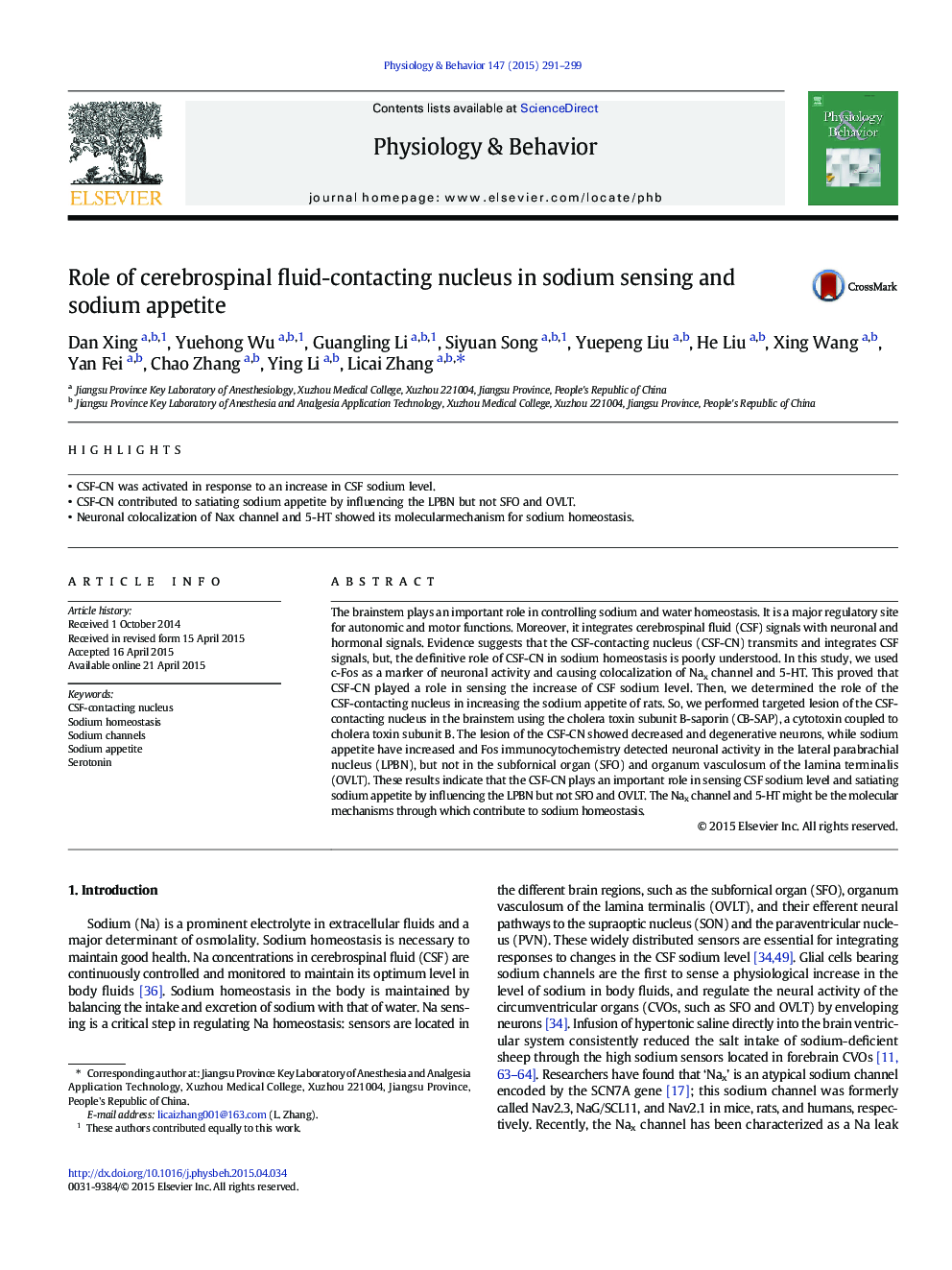| کد مقاله | کد نشریه | سال انتشار | مقاله انگلیسی | نسخه تمام متن |
|---|---|---|---|---|
| 5923495 | 1571170 | 2015 | 9 صفحه PDF | دانلود رایگان |
عنوان انگلیسی مقاله ISI
Role of cerebrospinal fluid-contacting nucleus in sodium sensing and sodium appetite
ترجمه فارسی عنوان
نقش هسته در تماس با مایع مغزی نخاعی در حساسیت سدیم و اشتها آور سدیم
دانلود مقاله + سفارش ترجمه
دانلود مقاله ISI انگلیسی
رایگان برای ایرانیان
کلمات کلیدی
موضوعات مرتبط
علوم زیستی و بیوفناوری
بیوشیمی، ژنتیک و زیست شناسی مولکولی
فیزیولوژی
چکیده انگلیسی
The brainstem plays an important role in controlling sodium and water homeostasis. It is a major regulatory site for autonomic and motor functions. Moreover, it integrates cerebrospinal fluid (CSF) signals with neuronal and hormonal signals. Evidence suggests that the CSF-contacting nucleus (CSF-CN) transmits and integrates CSF signals, but, the definitive role of CSF-CN in sodium homeostasis is poorly understood. In this study, we used c-Fos as a marker of neuronal activity and causing colocalization of Nax channel and 5-HT. This proved that CSF-CN played a role in sensing the increase of CSF sodium level. Then, we determined the role of the CSF-contacting nucleus in increasing the sodium appetite of rats. So, we performed targeted lesion of the CSF-contacting nucleus in the brainstem using the cholera toxin subunit B-saporin (CB-SAP), a cytotoxin coupled to cholera toxin subunit B. The lesion of the CSF-CN showed decreased and degenerative neurons, while sodium appetite have increased and Fos immunocytochemistry detected neuronal activity in the lateral parabrachial nucleus (LPBN), but not in the subfornical organ (SFO) and organum vasculosum of the lamina terminalis (OVLT). These results indicate that the CSF-CN plays an important role in sensing CSF sodium level and satiating sodium appetite by influencing the LPBN but not SFO and OVLT. The Nax channel and 5-HT might be the molecular mechanisms through which contribute to sodium homeostasis.
ناشر
Database: Elsevier - ScienceDirect (ساینس دایرکت)
Journal: Physiology & Behavior - Volume 147, 1 August 2015, Pages 291-299
Journal: Physiology & Behavior - Volume 147, 1 August 2015, Pages 291-299
نویسندگان
Dan Xing, Yuehong Wu, Guangling Li, Siyuan Song, Yuepeng Liu, He Liu, Xing Wang, Yan Fei, Chao Zhang, Ying Li, Licai Zhang,
